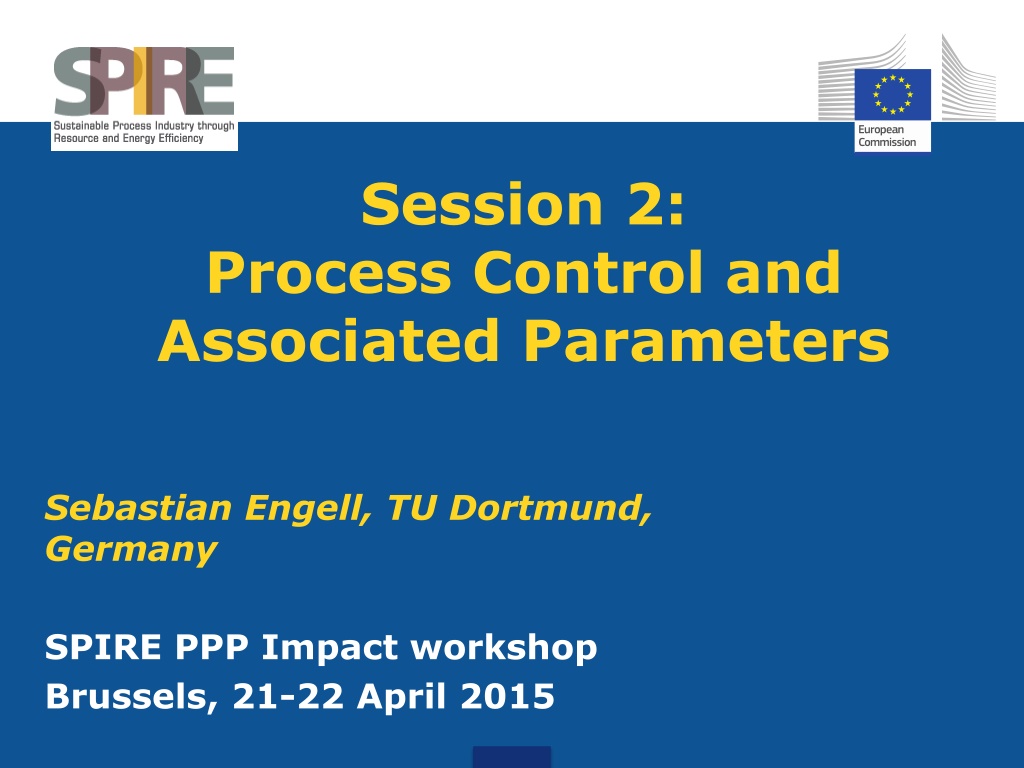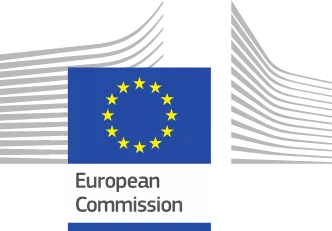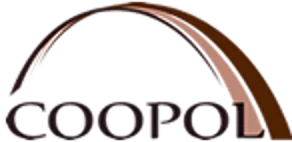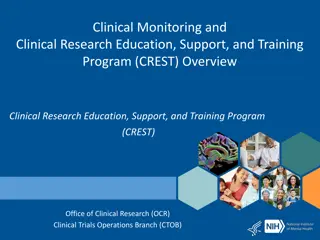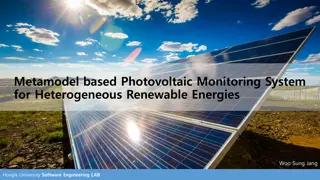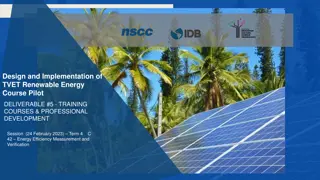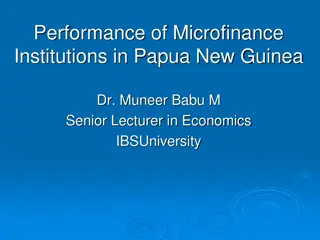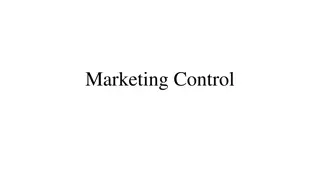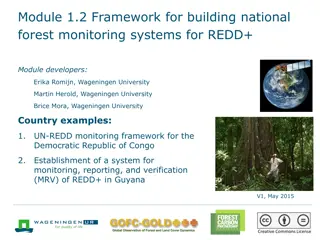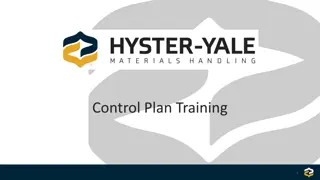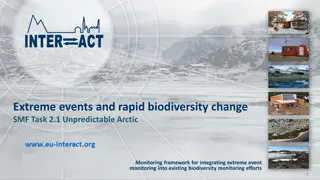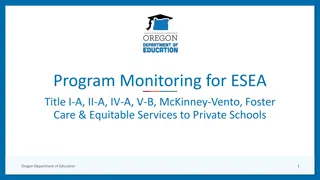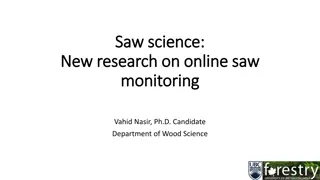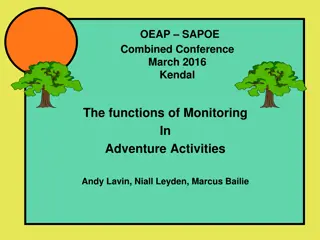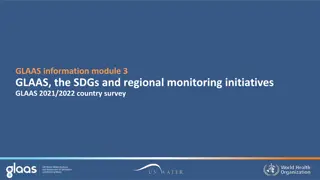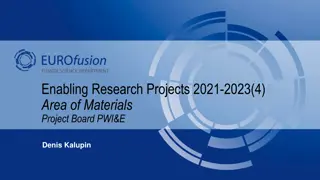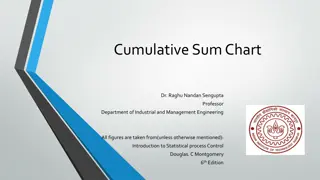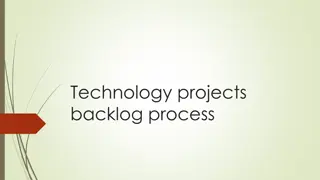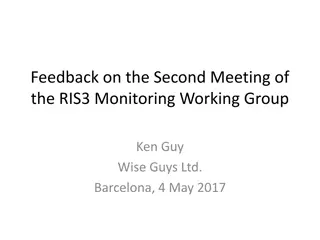Process Control and Resource Efficiency Monitoring Projects: 2012 - 2015
Projects focused on developing control and monitoring methods for resource efficiency in chemical processes, including real-time optimization and sensor development for polymerization processes. Achievements include models for improved process chain, implementation of online optimization, and demonstration of batch time reduction with quality maintenance.
Download Presentation

Please find below an Image/Link to download the presentation.
The content on the website is provided AS IS for your information and personal use only. It may not be sold, licensed, or shared on other websites without obtaining consent from the author. Download presentation by click this link. If you encounter any issues during the download, it is possible that the publisher has removed the file from their server.
E N D
Presentation Transcript
Session 2: Process Control and Associated Parameters Sebastian Engell, TU Dortmund, Germany SPIRE PPP Impact workshop Brussels, 21-22 April 2015
Domain 1: Process Control and Resource Efficiency Monitoring Projects: 2012 - 2015 Focus on CONTROL 2013/14 2016/17 FOCUS on Resource Efficiency Monitoring
COOPOL Control and Real-Time Optimization of Intensive Polymerization Processes Provide a generic basis for widely applicable sustainable intensified chemical processes Development of continuous production by intensive smart- scale technology for polymerization Development of novel methods and state-of-art tools for model based control and optimization of intensified polymerization processes Advanced predictive models of emulsion polymerisation processes that can be utilised in new types of soft-sensors and in model-based control Development of novel sensors for emulsion polymerization and of a framework for sensor-fusion in real time
COOPOL Main achievements and impacts Framework for intensification of chemical processes within a limited time frame Robust and detailed models for polymerization processes, improvement of complete process chain Hard/soft sensors Implementation of on-line optimization in an industrial environment Demonstration at BASF pilot reactor showed 10% batch time reduction without negative effects on polymer quality.
OPTICO Model-based Optimization and Control for Process-Intensification in Chemical and Biopharmaceutical Systems - OPTICO Adaptive consisting based modeling methodologies and advanced process analytics tools for intensified chemical/biochemical plant design and operation Methodological design approach for sustainable, intensified chemical/biopharmaceutical operation through a flexible, integrated multi-scale modeling framework coupled with advanced process analytics tools and modern techniques and of integrated multi-scale, computational multi-phase framework phenomena- plant design and optimization/control
OPTICO Main achievements and impacts INDUSTRIAL PROCESSES ENABLING TECHNOLOGIES 0.95 0.8 60 Plant Data Model Prediction Optimal Profile First reactor Grade 4701 First reactor Overall Model Prediction 55 50 Crystallinity, % 0.6 45 Product Density, kg/lt 0.94 40 dW/dlog(M) 35 0.4 30 0 5 10 15 20 Time, Days 0.93 0.2 Optimization and Control Computer Aided Process Design 0.0 First reactor 2 3 4 log(Molecular weight) 5 6 7 8 0.92 0 5 10 15 20 Polymerization Processes Pharmaceuticals Crystallization Time, Days OPTICO Framework for Process Intensification Design&Optimal Operation Process Intensification Multi-scale Modeling Process Analytics Monoclonal Antibodies Production /Purification Organic Oxidation with H2O2 Sensors Development
OPTICO Achievements Continuous Separation of Proteins Development of a novel twin-column MCSGP protein separation process (Multicolumn Countercurrent Solvent Gradient Purification) with a 2-3 times higher productivity (Chromacon). Continuous Crystallization Process Model-based process optimization led to the improvement of the product quality, reduction of process costs (e.g. energy), etc. Design of a new continuous process, i.e., air-lift crystallizer (DSM). Suspension and Inverse Suspension Polymerization Utilization of Raman and Vis-spectrometry for on-line monitoring of monomer conversion and particle size distribution (RWTH/USTR). Use of developed mechanistic models for process optimization and control of product quality (e.g. MWD and PSD) (BASF/CERTH). Fatty Acid Oxidation Process improvements of 17%, compared to the base case operation, was achieved via process monitoring and process modeling (ARKEMA).
Real-time Monitoring and Optimization of Resource Efficiency in Integrated Processing Plants - MORE Definition and implementation of near real-time resource efficiency indicators (REI) to measure the resource efficiency of large chemical production plants during operation Novel analytics and data reconciliation for REI computation Visualization and REI-based online decision support tools with what-if analysis to support operators and managers Multi-criterial real-time optimization of resource efficiency by adjusting operational parameters Implementation and demonstration of the methodologies in 4 industrial case studies
MORE Main achievements and impacts Definition of real-time resource efficiency indicators for continuous and batch plants MORE FROM LESS Process Dashboard Visualization of multi-dimensional resource efficiency indicators Identification of trends Evaluation against theoretical or historical optimum Novel analytics Neutral implementation platform Optimal operation of evaporators Significant savings achieved
Modeling the Impact of Innovations on the Circular Economy - REFFIBRE Methodologies and models for environmental and economic assessments (Life Cycle assessment and technoeconomic analysis of the value chains) Methodologies and tools for eco-designed paper production (paper production/quality design models) Process modelling tools and innovative analytical tools to control production in a multi-product mill concept
REFFIBRE Main achievements and impacts Improved resource efficiency in the paper/board production due to larger reject amounts in sorting, fractionation and screening Novel measurement for recycled pulp quality will be used to control the operation in the paper mill Adaption of novel technologies to produce side products or raw materials from waste fractions
TOP REF Innovative Tools, Methods and Indicators for Optimising the Resource Efficiency in the Process Industry Development of a set of Key Resource Indicators Cross-sectorial methodology for process diagnosis and monitorization. Identification of KPAs Key Process Attributes (Industry constrains) CPP Critical Parameters and the related Variables to measure and control Non-invasive, real-time and on-line monitoring and control tools adapted to three specific energy and resource intensive processes. New model software tools for resource efficiency management to the process industry Multisectorial board to spread the results to other intensive industries. Demonstration on real conditions in three demo- sites. Process
TOP REF Main achievements and impacts Homogeneous audit and diagnosis based on thermo-economics of the resource efficiency of the processes (lack of European regulation taking into account water, raw material and wastes) Improved software library, models and platforms for modelling and simulation focused on resource efficiency. (Feasible to be integrated into to commercial tools already used by industries) Support to the decision making by KRIs especially by energy and exergy indicators (for industry, public authorities, policy makers) Decoupling of economy and environment by providing information that is easy to transform and compare between industries Standardization of KRIs
Aggregated technological impact COOPOL AND OPTICO Robust smart-scale reactors Transition to continuous processing Improved modelling (more detailed, multi-scale) Process analytic technology Multi-product and tailor-made products Model-based optimization and control MORE, REFIBRE and TOP REF Resource efficiency indicators Novel (analytical) measurements Decision support tools Improved monitoring and control Increased materials reuse Life-cycle assessment and value chain analysis
Aggregated economic/social impact Higher competitiveness with higher resource efficiency Sustainable society and a more resilient economy. Less dependency on imported resources (energy and raw materials) Higher human productivity due to self-optimizing plants Lower transport costs due to smart-scale processes and lower collection efforts Target figures: up to 20% improvement and energy and resource efficiency up to 10-20% enhanced production capacity 30% increase of reusability and recycling of materials up to 15% reduction of production costs
Aggregated environmental impact Reduction of the CO2footprint Reduction of non-renewables consumption Reduction of fossil energy intensity Minimization of waste and off-spec product Cleaner working environments
Technical cross-cutting issues Process modelling methods and tools, multi-scale and multi- phase Novel analytical on-line measurements Realization of advanced control Data reconciliation Process monitoring DCS-vendor neutral implementation platform for advanced monitoring and control solutions Model-based off-line and real-time optimisation Robust smart-scale continuous processes
Non-technical cross-cutting issues Standardisation Common references and tools to analyse and compare industrial processes Novel audit methodology focused on resource efficiency Cross-sectorial life-cycle, cost and sustainability assessment Business models for technology transfer Motivation and education of the operators Education and skills development
Synergies and benefits of clustering Joint events of projects and support actions on resource efficiency monitoring and improvement Joint publication Cross-industry exchange (e.g. joint Advisory Board meeting) Standardization acitivities
Potential for further synergies and recommendations for follow-up Closer collaboration of the projects and support actions on resource efficiency monitoring and lifecycle management Public event SPIRE Conference on Ressource and Energy Efficiency by Monitoring and Control Liasing between the industrial advisory boards Standardization activities
